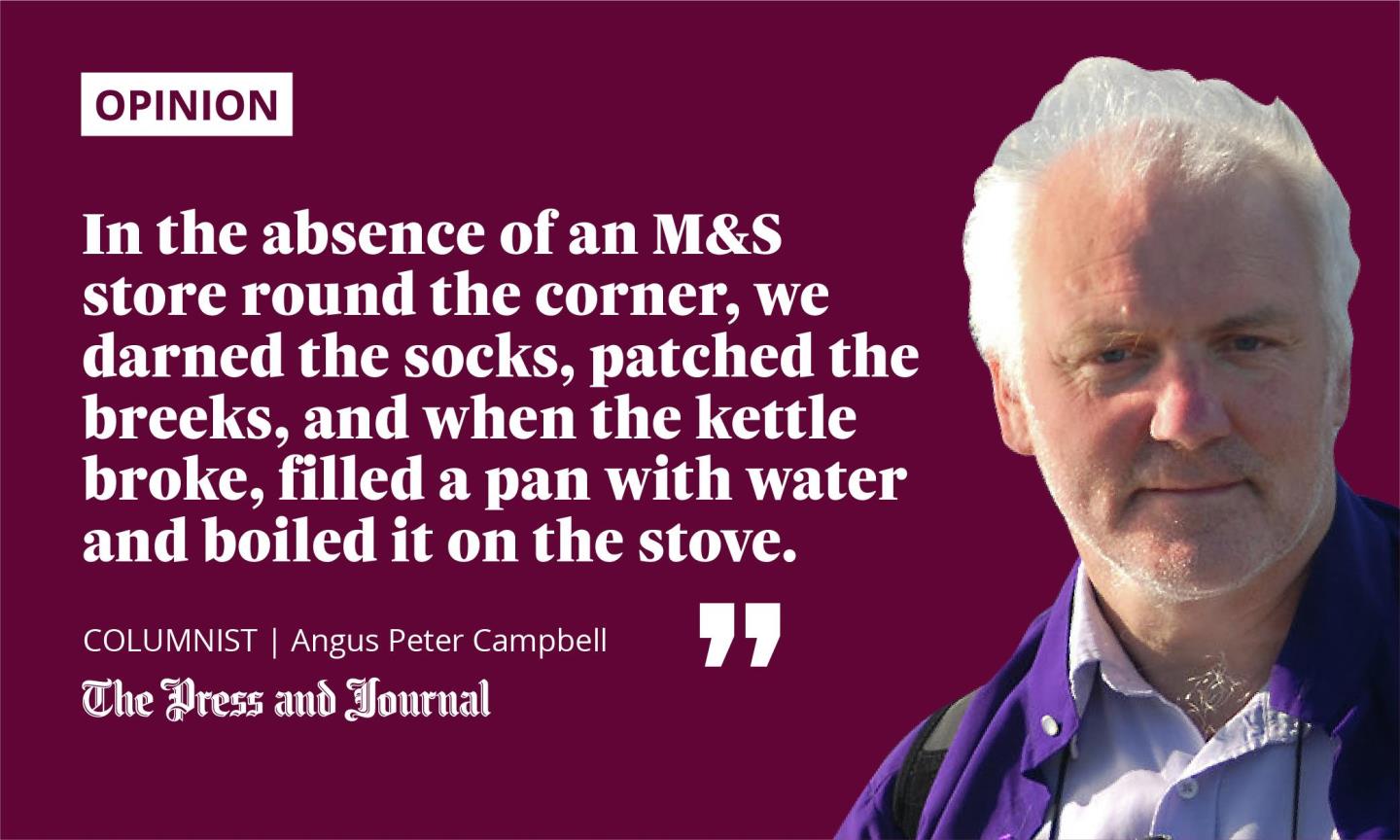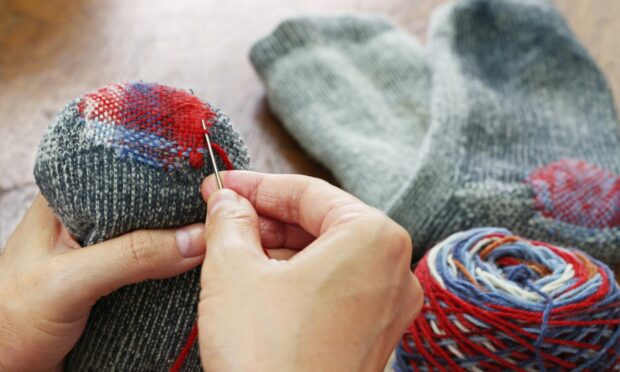I’ve always liked people who could fix or repair things.
Broken watches and clocks, kettles, pots and pans, and those mysteries under the bonnets of cars. When I take my vehicle to the garage, some amazing mechanic always solves the problem, replaces the part, and then shows me the old bit while shaking his head, and I agree with him. As if I knew what he was talking about.

We have become a throwaway society, even within my own lifetime. Growing up in a kind of permanently locked-down situation in South Uist, we sort of made do, as the old phrase goes.
In the absence of an M&S store round the corner, we darned the socks, patched the breeks, and when the kettle broke, filled a pan with water and boiled it on the stove. Aye, those were the days…
‘A patch is better than a tear, but a tear is more genteel’
Darning has a class structure of its own: there’s a patch which speaks of poverty and, as today with young folk who pay a fortune to buy torn jeans, a patch which speaks of fashion. An old proverb says: “A patch is better than a tear, but a tear is more genteel.”
In Scots, a patch is called a clout, and there’s a wonderful old saying that puts the class distinctions well: “Clout upon a hole is guid gentry, clout upon a clout is guid yeomanry, but clout upon a clouted clout is downright beggary!”
I always regretted that my home village of South Boisdale didn’t have a smithy, or a chestnut tree under which it could stand, though the Smiths still lived there – among them, two remarkable brothers I knew well, Pàdraig and Iain, who carried a fair deal of the old stories and chants and lore. Iain, especially, who had a good version of Duan na Fèinne (the Fingalian Chant).
He must also have told himself the Chant out on the moors over the decades as he herded his cows
The interesting thing about the Fingalian Chant was not just its antiquity and heroic content, but the way Iain told it. It wasn’t recited like a poem, nor yet sung, but sort of chanted in between, which the great Gaelic singer and music scholar Kenna Campbell tells me was the old way of delivering the “Duan”.
He must also have told himself the Chant out on the moors over the decades as he herded his cows, because, by that time, the old traditional cèilidhs had mostly died away, and so the opportunity to tell these mnemonic things had receded.
The Lewis singer Mary Smith, who spent years teaching art in Uist and also knew Iain well, told me that he must have been reciting the story to himself for years, otherwise he wouldn’t have retained it for so long.
Redefining ‘monlingualism’
Although Iain had English – he was born in 1909 and spent time digging trenches in Aberdeenshire in the army in the late 1920s (the generals imagining that the next war would be like the previous one) – he may have been one of the last of those you might call monolingual. His language rhythms – which is all that matters – were Gàidhlig.
A staff writer from the Boston Globe, Brian MacQuarrie, whose ancestors left South Uist in the 19th century, crossed the Atlantic on a journey of discovery in 1999. When he spoke with Iain, he put it this way: “After the obligatory whisky, Iain speaks in Gaelic… he has no memory of a Duncan MacQuarrie. Iain’s friend translates, but the old man insists we visit the ruined MacQuarrie croft anyway.”
It’s that word “translates”. In other words, on the very eve of the 21st century, we have there a near-enough monolingual Gaelic speaker. I recall reading that the last “monolingual Gaelic speaker” in Scotland died in the 1970s.
Perhaps we need to redefine what “monlingualism” means? Sure, I can speak a few words of French – and some English – but my language remains Gàidhlig, even in English, just like Iain.
Can we restore, repair and renew?
It’s New Year’s Day on Saturday, and soon enough, we hope, the first signs of spring: the early primroses, the gorse turning yellow, the first cuckoo, and then the summer arrival of the travellers we called in Gàidhlig “Na Ceàird”. The word “Ceàrd” means a “craftsman”, so at the heart of the description of these annual visitors was a lovely acknowledgement of their skills, from repairing pots and pans and tins and kettles, to a fine bit of piping and a song or two.
I wonder if Covid has caused us to rethink our throwaway culture? Perhaps even with friends and neighbours and languages: are there a few broken things around that can now be restored, repaired and renewed?
Bliadhn’ Ùr Mhath Dhuibh Uile!
Angus Peter Campbell is an award-winning writer and actor from Uist

